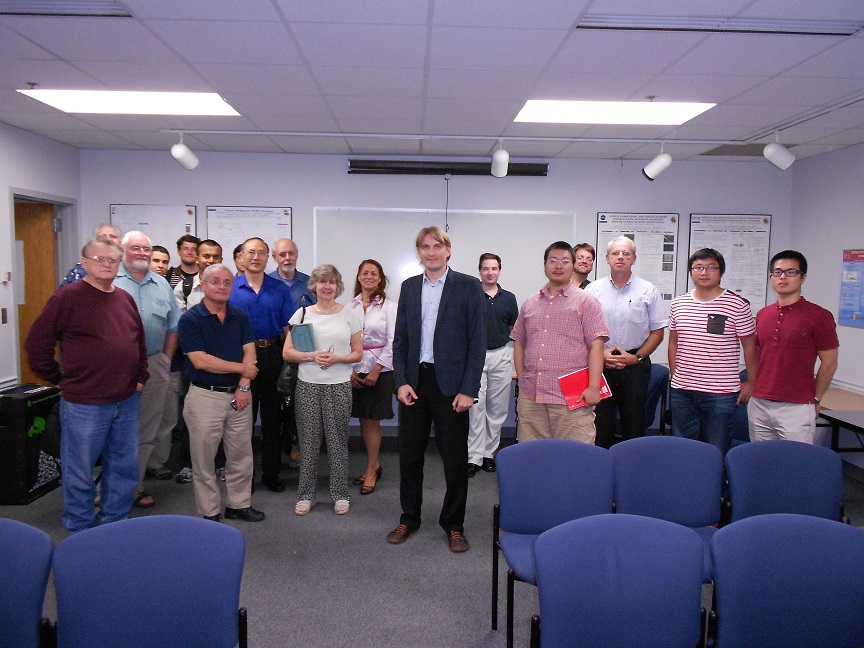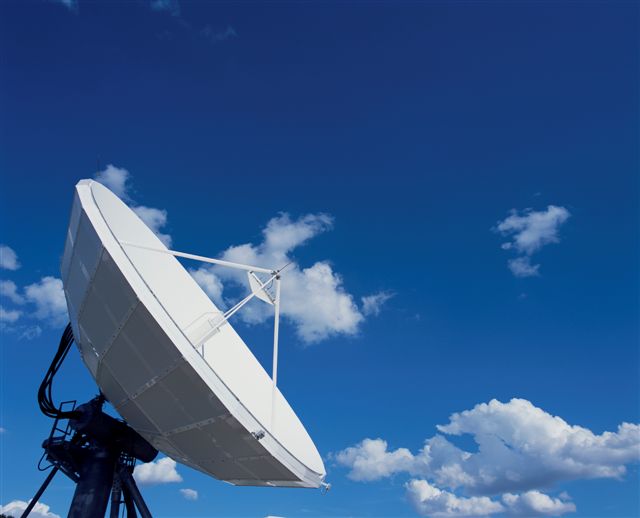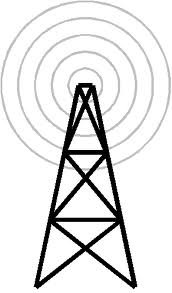July 12, 2013
First Seminar: Computational
Electromagnetics in the Frequency Domain
Professor Roberto D. Graglia
Bio

| Roberto D. Graglia was born in Turin, Italy, in 1955. He received the Laurea degree (summa cum laude) in electronic engineering from the Polytechnic of Turin in 1979, and the Ph.D. degree in electrical engineering and computer science from the University of Illinois at Chicago in 1983. From 1980 to 1981, he was a Research Engineer at CSELT, Italy, where he conducted research on microstrip circuits. From 1981 to 1983, he was a Teaching and Research Assistant at the University of Illinois at Chicago. From 1985 to 1992, he was a Researcher with the Italian National Research Council (CNR), where he supervised international research projects. In 1991 and 1993, he was Associate Visiting Professor at the University of Illinois at Chicago. In 1992, he joined the Department of Electronics, Polytechnic of Turin, as an Associate Professor. He has been a Professor of Electrical Engineering at that Department since 1999. He has authored over 150 publications in international scientific journals and symposia proceedings. His areas of interest comprise numerical methods for high- and low-frequency electromagnetics, theoretical and computational aspects of scattering and interactions with complex media, waveguides, antennas, electromagnetic compatibility, and low-frequency phenomena. He has organized and offered several short courses in these areas. Prof. Graglia has been a Member of the editorial board of ELECTROMAGNETICS since 1997. He is a past associate editor of the IEEE TRANSACTIONS ON ANTENNAS AND PROPAGATION and of the IEEE TRANSACTIONS ON ELECTROMAGNETIC COMPATIBILITY. He is currently an associate editor of the IEEE ANTENNAS AND WIRELESS PROPAGATION LETTERS. He was the Guest Editor of a special issue on Advanced Numerical Techniques in Electromagnetics for the IEEE TRANSACTIONS ON ANTENNAS AND PROPAGATION in March 1997. He has been Invited Convener at URSI General Assemblies for special sessions on Field and Waves (1996), Electromagnetic Metrology (1999), and Computational Electromagnetics (1999). He served the International Union of Radio Science (URSI) for the triennial International Symposia on Electromagnetic Theory as organizer of the Special Session on Electromagnetic Compatibility in 1998 and was the co-organizer of the special session on Numerical Methods in 2004. Dr. Graglia served the IEEE Antennas and Propagation Society as a member of its Administrative Committee (AdCom), for the triennium 2006-2008. Since 1999, he has been the General Chairperson of the biennial International Conference on Electromagnetics in Advanced Applications (ICEAA), held in Turin. Prof. Graglia was elected Fellow of the IEEE in 1998 for his contributions in the application of numerical techniques in the studies of electromagnetic structures |
Abstract
First Seminar: Computational Electromagnetics in the
Frequency Domain
Finite methods are nowadays widely used for the analysis and
design of complex electromagnetic structures. Among these methods, the Method
of Moments is the most popular numerical technique for solving electromagnetic
problems formulated in terms of integral equations, whereas the Finite Element
and the Finite Difference methods are used to model problems in terms of
differential equations. These methods share common features, have complementary
advantages and, in advanced applications, they are often used in combination,
possibly enriched by exact or asymptotic solutions of appropriate canonical
problems. These numerical techniques have applications to many practical
problems, e.g.: EMC & EMP; shielding radiation from printed circuits;
microwave hazards; electromagnetic radiation from and penetration into
vehicles, aircraft, ships; antennas near ground; design of frequency selective
surfaces; radar scattering; etc. This presentation is intended to provide an
in-depth coverage of the Moment Method and of the Finite Element and Finite
Difference Methods, with discussion of absorbing boundary conditions and of
hybrid methods. Particular applications can be considered in detail, such as
problems involving nonlinear and/or anisotropic materials, as well as complex
geometries. Dr. Graglia would like to keep this presentation quite broad, with
the understanding that he will be coordinating its duration and specific focus
with the inviting institutions.
Second Seminar: Higher order modeling for Computational
Electromagnetics
The progress in the area of Computational Electromagnetics,
together with the cost reduction and continuous increase of the computational
speed and power of modern computers, have contributed to the development and
broad diffusion of numerical software for the analysis and design of complex
electromagnetic structures and systems. The geometry and the materials of these
structures can nowadays be modeled by powerful pre-processor codes able to
provide high order description of the problem to the electromagnetic solver-software.
To take advantage of the high quality models available by using the modern
pre-processors, several researchers have also developed in the last decade high
order basis functions for finite electromagnetic solver codes. This
presentation is intended to provide an overview of the most recent developments
obtained in this special area. After a brief overview of the fundamentals of finite
methods, an in-depth coverage of higher order models for Moment Method and
Finite Element Method applications is provided, thereby considering
interpolatory and hierarchical higher order vector bases with a detailed
discussion of the implementation problems and of the advantages provided by use
of higher-order models. Dr. Graglia suggests this presentation to follow that
entitled Computational Electromagnetics in the Frequency Domain,with the
understanding that he will be coordinating with the inviting institutions for
the streamlining of the presentation(s) according to their interests.
July 29,
2013
Metamaterials to Control and Manipulate Electromagnetic Waves
Bio
Andrea Alù is an Assistant Professor at the University of Texas at
Austin. He received the Laurea, MS
and PhD degrees from the University of Roma Tre, Roma, Italy, respectively in
2001, 2003 and 2007. His research interests span over a broad range of areas,
including metamaterials and plasmonics, electromagnetic theory and applications,
nanooptics and photonics, and acoustic metamaterials. Over the last few years,
he has received several research awards, including the OSA Adolph Lomb medal
(2013), the URSI Issac Koga Gold Medal (2011), the SPIE Early Career
Investigator Award (2012), an NSF CAREER award (2010), the AFOSR Young
Investigator Award (2010) and the DTRA Young Investigator Award (2011).
Andrea will discuss his recent progress and research activity in the field of metamaterials and plasmonics, covering a wide range of topics, from theoretical approaches to rigorously model the anomalous wave propagation and interaction with metamaterials, to various applications at microwaves and optical frequencies, including cloaking and invisibility, energy funneling and harvesting, polarization and radiation control. He will discuss our most recent experimental results involving lithographically printed and AFM assembled metamaterial nanostructures, including the concept of magnetic-based Fano resonances in nanoclusters, optical nanocircuits, enhanced artificial magnetism and chirality in properly tailored metamaterials. He will also discuss his recent advances in the area of metamaterial cloaking and invisibility, including thier experimental realizations of metamaterial and metasurface cloaks for 3D free-standing objects and their theoretical results on the general limitations of cloaking using passive materials. Physical insights into these exotic phenomena will be discussed during the talk.



